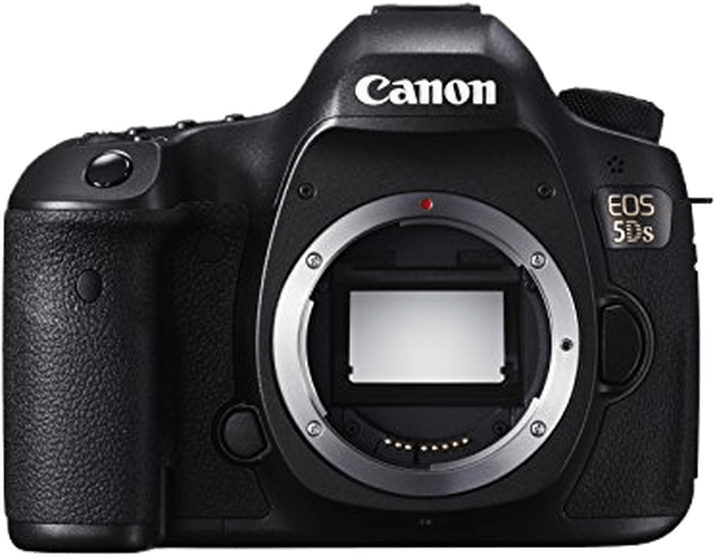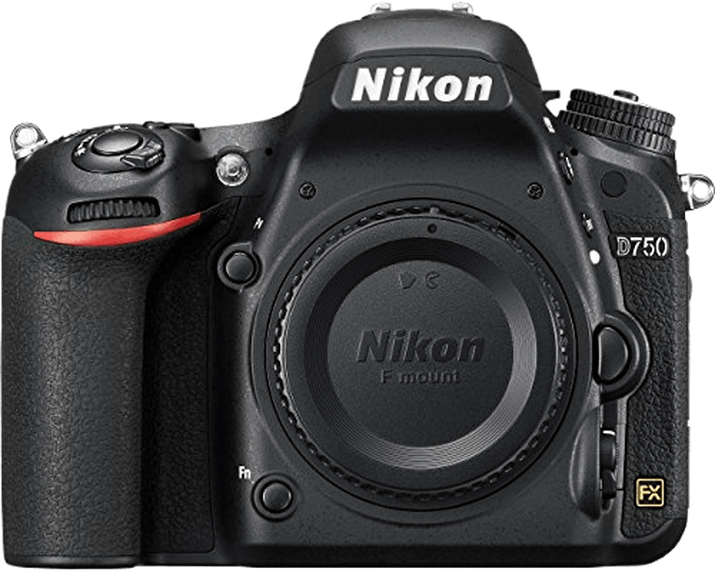Canon EOS 5DS vs Nikon D750 Comparison
Canon EOS 5DS

Nikon D750

The Canon EOS 5DS narrowly edges out the Nikon D750 with a score of 69/100 compared to 68/100. Both cameras are DSLRs released in 2014 and 2015, respectively. They share similar dimensions, but the Canon EOS 5DS is slightly larger at 152 x 116 x 76mm and heavier at 930g.
The Canon EOS 5DS’s higher score reflects its better performance in certain areas. Its larger size and weight provide a more substantial feel and may offer improved stability. However, the Nikon D750 has its advantages, such as a lower launch price of $2300 compared to the Canon’s $3700.
Taking into account the specifications and scores, the Canon EOS 5DS offers a slight edge over the Nikon D750. However, the Nikon D750 still holds its own in terms of value for money.
Canon EOS 5DS vs Nikon D750 Overview and Optics
The Canon EOS 5DS wins the optics comparison with a score of 73/100, while the Nikon D750 scores slightly lower at 71/100. Both cameras have full-frame CMOS sensors, do not offer image stabilization, and use their respective proprietary lens mounts: Canon EF and Nikon F FX.
The EOS 5DS stands out with its impressive 50.6 megapixels, providing more detailed images than the D750’s 24.3 megapixels. Additionally, the Canon camera utilizes a dual DIGIC 6 processor, which enhances image processing capabilities and overall performance.
However, the Nikon D750 has a faster shooting speed of 6.5 frames per second, compared to the 5DS’s 5 frames per second. This enables the D750 to capture fast-moving subjects more effectively. Furthermore, the D750 boasts a higher DXOMARK sensor score of 93, indicating better image quality and low-light performance than the 5DS’s score of 87.
Despite the differences in optics scores, both cameras have their strengths. The Canon EOS 5DS excels in image resolution and processing power, making it ideal for photographers seeking maximum detail and sharpness. On the other hand, the Nikon D750 provides better performance in fast-paced situations and low-light environments, catering to a wider range of photographic scenarios.
In the end, the choice between these two cameras depends on the specific needs and priorities of the photographer. The Canon EOS 5DS may be more suitable for those who prioritize high-resolution images, while the Nikon D750 may be a better fit for those who require speed and versatility.
Canon EOS 5DS vs Nikon D750 Video Performance
The Canon EOS 5DS edges out the Nikon D750 in video capabilities with a score of 57/100, compared to the Nikon’s 56/100. Both cameras share some common specifications, such as Full HD video resolution and maximum video dimensions of 1920 x 1080. However, there are notable differences between the two that contribute to the Canon’s slight advantage.
The EOS 5DS outperforms the D750 in terms of time-lapse functionality, as it has this feature built in. This allows users to easily create time-lapse videos without needing additional equipment or software. This added convenience contributes to the Canon’s higher video score.
On the other hand, the Nikon D750 offers a higher maximum video frame rate at 60fps, compared to the Canon’s 30fps. This means that the D750 can capture smoother video, especially in fast-moving scenes or when slow motion effects are desired. Despite this advantage, it was not enough to outweigh the benefits provided by the Canon’s built-in time-lapse feature.
Taking into account these differences, the Canon EOS 5DS proves to be slightly better in terms of video capabilities, mainly due to its built-in time-lapse functionality. The Nikon D750, while offering a higher frame rate, falls short in providing the convenience of time-lapse creation. Therefore, users looking for enhanced video features may find the Canon EOS 5DS to be a more suitable choice, while those prioritizing smooth video capture may still consider the Nikon D750 as a viable option.
Canon EOS 5DS vs Nikon D750 Features and Benefits
The Canon EOS 5DS and Nikon D750 tie in their feature scores, both receiving 59/100. Despite their equal scores, each camera offers unique advantages and disadvantages in terms of features.
Both cameras have a 3.2-inch screen size and lack a touchscreen and GPS. However, the Nikon D750 has a higher screen resolution of 1,229,000 dots compared to the Canon EOS 5DS’s 1,040,000 dots. This higher resolution results in a clearer and more detailed display on the Nikon D750.
The Nikon D750 surpasses the Canon EOS 5DS with its flip screen and WIFI capabilities. The flip screen allows for flexible shooting angles, making it easier for photographers to capture images from various positions. Additionally, the WIFI feature enables wireless image transfer and remote camera control, which can be convenient for photographers.
On the other hand, the Canon EOS 5DS does not offer any distinct advantages over the Nikon D750 concerning the given specifications. Both cameras lack Bluetooth connectivity, which could potentially be a drawback for users seeking seamless device integration.
Given the equal feature scores, the Nikon D750 appears to be the better option due to its higher screen resolution, flip screen, and WIFI capabilities. While the Canon EOS 5DS does not offer any distinct advantages in this comparison, it is important to consider other factors, such as image quality and performance, when making a final decision. Ultimately, the choice between the two cameras depends on the individual photographer’s needs and preferences.
Canon EOS 5DS vs Nikon D750 Storage and Battery
The Nikon D750 outperforms the Canon EOS 5DS in storage and battery, scoring 79/100 compared to the 5DS’s 65/100. Both cameras feature two memory card slots, with compatibility for SD, SDHC, and SDXC cards. However, the 5DS also accepts Compact Flash cards, offering more versatility in storage options.
The D750’s superior battery life sets it apart, providing 1230 shots per charge with its EN-EL15 battery. In contrast, the 5DS’s LP-E6 battery allows for 700 shots. Neither camera supports USB charging. While the 5DS has a slight edge in storage compatibility, the D750’s significantly longer battery life makes it the better choice for extended shoots and less frequent battery replacements.
Canon EOS 5DS vs Nikon D750 – Our Verdict
Are you still undecided about which camera is right for you? Have a look at these popular comparisons that feature the Canon EOS 5DS or the Nikon D750:

